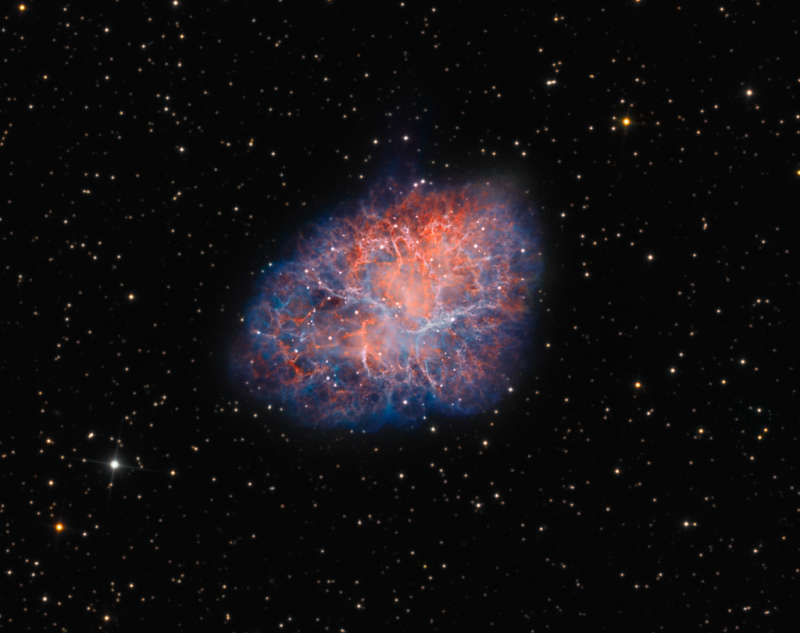
|
Credit & Copyright: Martin Pugh
Explanation:
The Crab Nebula is cataloged as M1, the first object on
Charles
Messier's famous 18th century list of things which are not comets.
In fact,
the
Crab is now known to be a
supernova remnant,
debris from the death explosion of a massive star,
witnessed
by astronomers in the year 1054.
This sharp,
ground-based telescopic view uses
narrowband data to track emission from ionized oxygen and hydrogen atoms
(in blue and red) and explore the tangled filaments within
the still expanding cloud.
One of the most exotic objects known to modern astronomers,
the Crab Pulsar,
a neutron star spinning 30 times a second,
is visible as a bright spot near
the
nebula's center.
Like a cosmic dynamo,
this collapsed remnant of the stellar core
powers the Crab's emission across the electromagnetic spectrum.
Spanning about 12 light-years, the Crab Nebula is a mere
6,500 light-years away in the
constellation
Taurus.
|
January February March April May June July August September October November December |
| ||||||||||||||||||||||||||||||||||||||||||||||||
NASA Web Site Statements, Warnings, and Disclaimers
NASA Official: Jay Norris. Specific rights apply.
A service of: LHEA at NASA / GSFC
& Michigan Tech. U.
Based on Astronomy Picture
Of the Day
Publications with keywords: supernova remnant - pulsar
Publications with words: supernova remnant - pulsar
See also:
- Supernova Remnant Cassiopeia A
- APOD: 2025 January 8 Á Supernova Remnants Big and Small
- APOD: 2024 September 18 Á The Mermaid Nebula Supernova Remnant
- Supernova Remnant CTA 1
- APOD: 2024 July 23 Á The Crab Nebula from Visible to X Ray
- APOD: 2024 April 16 Á Filaments of the Vela Supernova Remnant
- APOD: 2024 April 3 Á Unusual Nebula Pa 30
